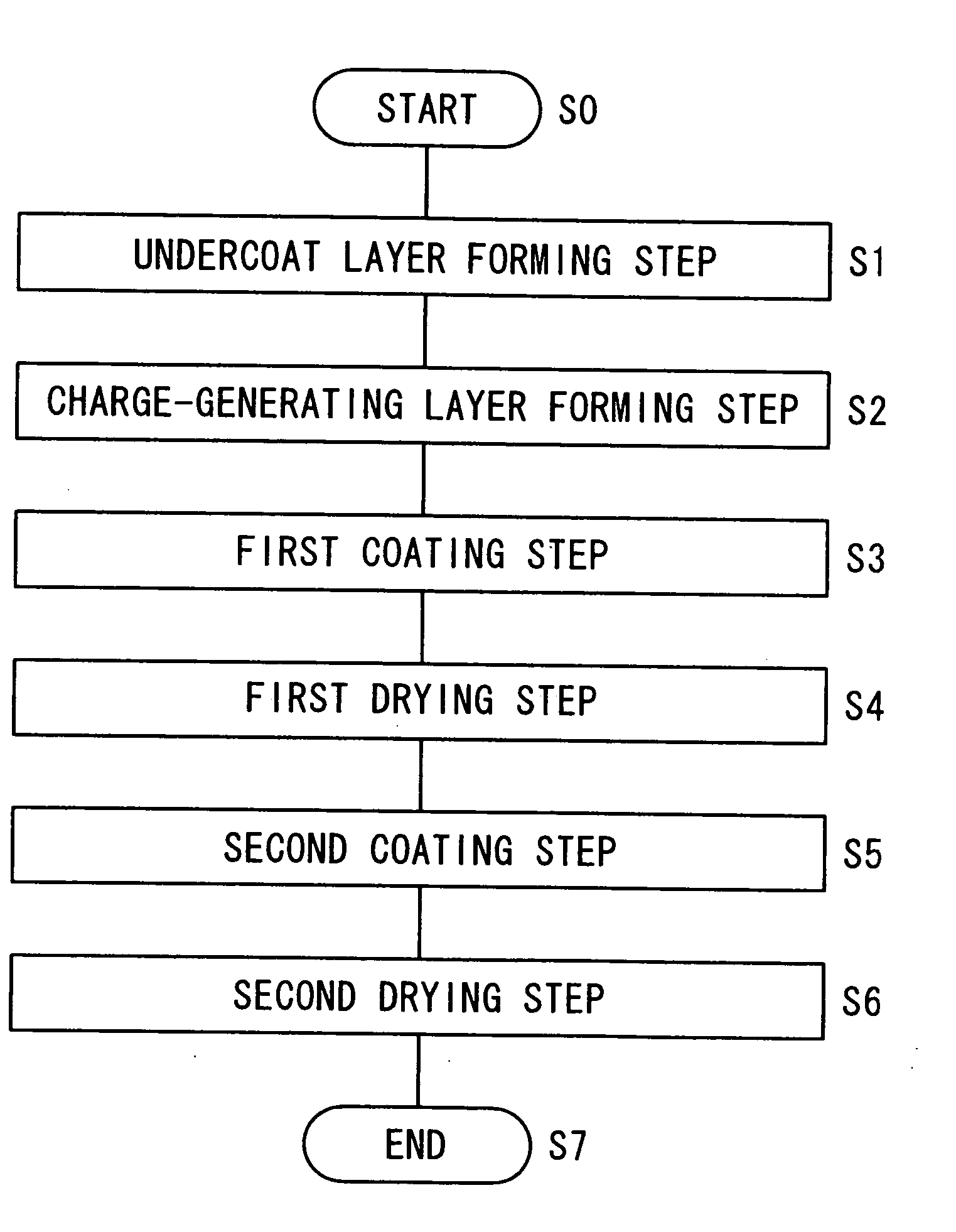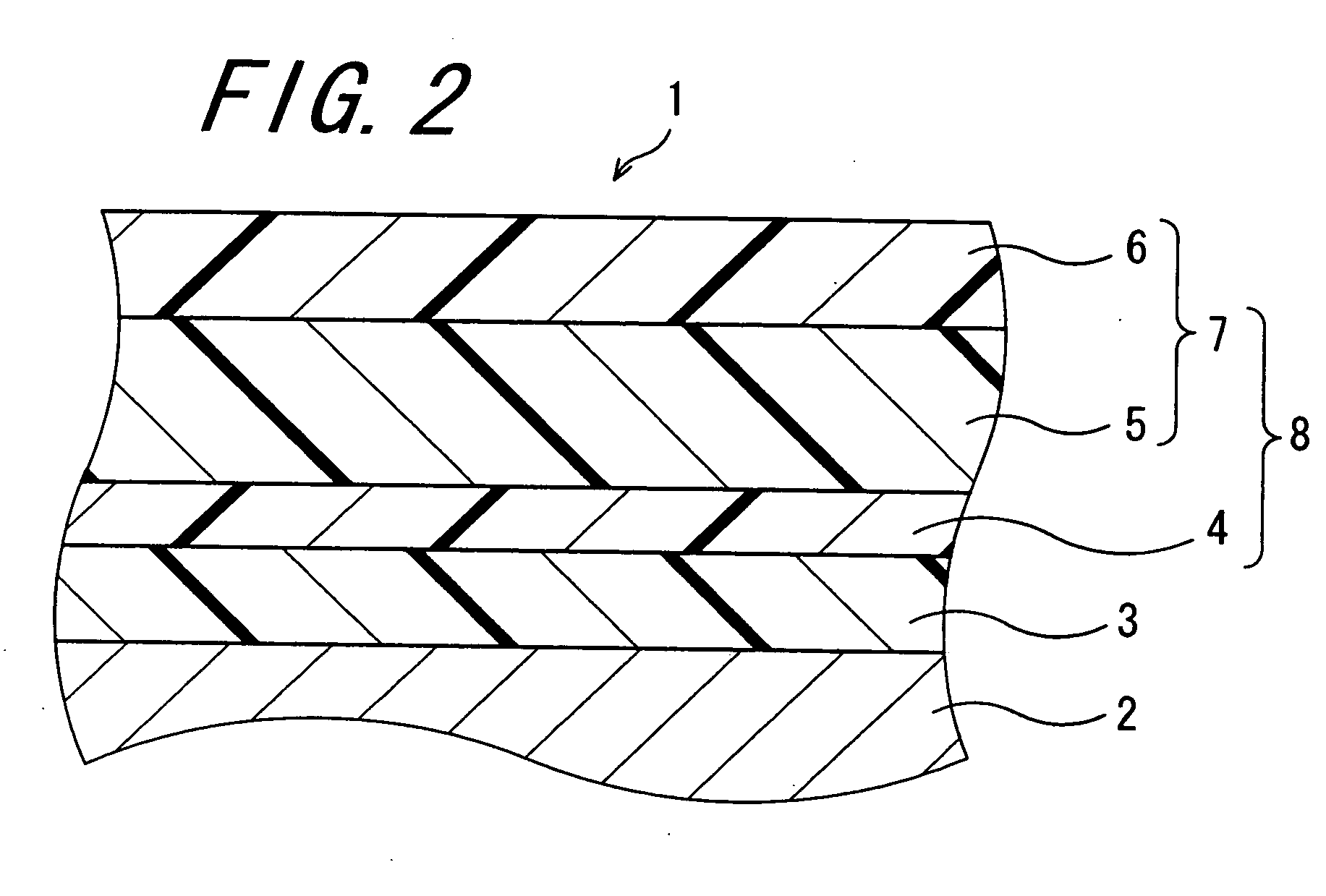Method for producing electrophotographic photoreceptor, electrophotographic photoreceptor and image forming apparatus
a photoreceptor and photoreceptor technology, applied in the direction of instruments, nuclear engineering, corona discharge, etc., can solve the problems of high production cost, poor plasticity of the surface, difficult formation of the photosensitive layer, etc., and achieve good photosensitivity and photoresponsiveness, the effect of not reducing the photosensitivity and photoresponsiveness
- Summary
- Abstract
- Description
- Claims
- Application Information
AI Technical Summary
Benefits of technology
Problems solved by technology
Method used
Image
Examples
example 1
[0203] An undercoat layer forming step, a charge-generating layer forming step, a first coating step, a first drying step, a second coating step and a second drying step were carried out in the manner mentioned below, thereby forming an undercoat layer, a charge-generating layer, a first charge-transporting layer and a second charge-transporting layer, on the outer peripheral surface of a cylindrical conductive substrate of aluminium having an outer diameter of 30 mm and a length in the lengthwise direction of 346 mm to construct a photoreceptor of Example 1.
Undercoat Layer-Forming Step:
[0204] 3 parts by weight of titanium oxide (trade name, TTO-D1 (dendritic rutile type surface-treated with Al2O3 and ZrO2, having a titanium content of 85%), by Ishihara Sangyo), and 3 parts by weight of alcohol-soluble nylon resin (trade name, CM8000, by Toray) were added to a mixed solvent of 60 parts by weight of methanol and 40 parts by weight of 1,3-dioxolan, and dispersed with a paint shaker...
example 2
[0210] A photoreceptor of Example 2 was produced in the same manner as in Example 1, for which, however, the hindered phenol compound of the structural formula (1ac) was used as the sublimable antioxidant.
example 3
[0211] A photoreceptor of Example 3 was produced in the same manner as in Example 1, for which, however, the heating temperature in the first drying step was 135° C.
PUM
| Property | Measurement | Unit |
|---|---|---|
| temperature | aaaaa | aaaaa |
| temperature | aaaaa | aaaaa |
| pressure | aaaaa | aaaaa |
Abstract
Description
Claims
Application Information
 Login to View More
Login to View More - R&D
- Intellectual Property
- Life Sciences
- Materials
- Tech Scout
- Unparalleled Data Quality
- Higher Quality Content
- 60% Fewer Hallucinations
Browse by: Latest US Patents, China's latest patents, Technical Efficacy Thesaurus, Application Domain, Technology Topic, Popular Technical Reports.
© 2025 PatSnap. All rights reserved.Legal|Privacy policy|Modern Slavery Act Transparency Statement|Sitemap|About US| Contact US: help@patsnap.com



